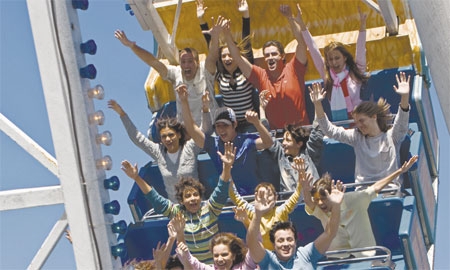Over the past decade, Brazil has matured economically, socially and politically to an enormous extent. It has raised its interaction with the world market and adjusted outside perceptions to a new reality: namely, Brazil as a dynamic country, home to a young and diverse population.
Hand in hand with this maturity have come a growing number of international events and visitors, and with greater economic status has come a growing taste for things American and European, including leisure activities.
Theme parks represent a brand new industry for Brazil, and one that has taken off rather quickly despite the high costs of starting up and operation. “As we don’t have a local industry manufacturing very high technology rides, most of the equipment has to be imported from other countries,” explains Alain Baldacci, president of SINDEPAT (the acronym for Integrated System of Amusement Parks and Tourist Attractions in Portuguese). “These innovations – like velocity models, computer simulations, 3D technologies, etc. – are mostly products of aviation and military technology that require a huge amount of capital.”
Catering to both local and foreign customers, SINDEPAT members and affiliates operate seven amusement parks and three waterparks, including the pioneer
Playcenter of São Paulo, the first state-of-the-art amusement park in Brazil;
Beach Park, a larger waterpark complex on the North Coast of Fortaleza; and a
Wet ’n Wild, the well known American waterpark brand, among others.
Through its participation in the International Association of Amusement Parks and Attractions (IAAPA), SINDEPAT members enjoy access to excellent networking and information exchanges, and can remain competitive in the Latin American market.
“The rides we offer are similar to those found in big theme parks overseas. We have high quality operations and exemplary safety records. For visitors coming from Argentina, Uruguay, Paraguay, Chile, Peru, etc. we offer a very good option for families,” says Mr. Baldacci.
Compared with the U.S. theme park industry, however, SINDEPAT has a long way to go. “Right now, we are on the same level as [the U.S. was] during the late 1970s and early 80s,” explains SINDEPAT’s president. He adds that combined, American theme parks sell what is nearly the equivalent of one ticket per citizen (300 million tickets sold per year in a country with a population of 310 million).
“Brazil’s amusement park industry has the same potential. However, let us assume that we only managed to tap into 50% of that… We have the potential to sell close to 100 million tickets a year. Right now, we’re only selling 12 million. This is the growth potential this industry has here. I don’t see many other sectors falling into that same growth bracket.”

1 COMMENT
Cool!